Grilling thick steaks to perfection is an art that combines skill, patience, and a touch of culinary flair. Whether you’re aiming for medium-rare or well-done, mastering the technique can elevate your barbecue game to professional levels. This guide will walk you through five essential tips to ensure your steaks are not only visually appealing but also tender, juicy, and cooked to perfection. From choosing the right cut to mastering the right temperature, these insights will make you the go-to grill master for all your summer cookouts.
Choose the Right Cut
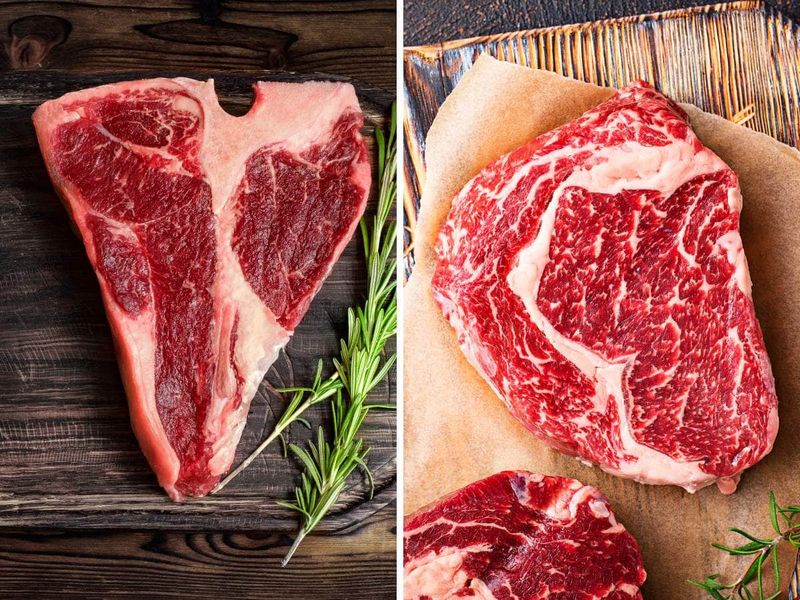
The journey to a perfect steak begins with choosing the right cut. A ribeye or T-bone, known for their marbling, are excellent choices for grilling. The marbling ensures the meat remains juicy and flavorful as it cooks. Selecting well-marbled cuts is crucial because the fat melts during grilling, keeping the steak tender. Ribeye, with its rich flavor, is perfect for those who enjoy a hearty steak. T-bone offers two textures in one cut. Remember, thicker cuts allow for better control over doneness, making it easier to achieve that juicy, tender interior.
Season Generously

Generous seasoning is key to enhancing the natural flavors of your steak. Coarse sea salt and freshly cracked black pepper are classic choices that complement the beef’s taste without overpowering it. Allow the steak to sit with the seasoning for at least 40 minutes before grilling. This resting period lets the salt penetrate the meat, enhancing its flavor and tenderness. You might experiment with adding garlic powder or paprika for additional complexity. Remember, balance is essential; too much seasoning can overshadow the natural beefy goodness.
Master the Grill Temperature
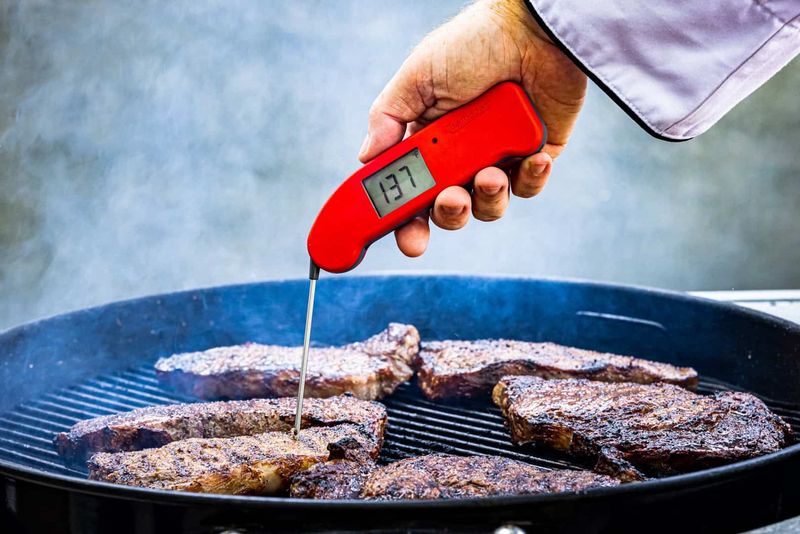
Maintaining the right grill temperature is crucial for cooking thick steaks. Preheat your grill to around 500-550°F for a perfect sear. This high temperature creates a caramelized crust, sealing in juices and enhancing flavor. Use a two-zone fire setup: one side hot for searing and the other cooler for finishing. This method allows you to sear the outside for those grill marks while gently cooking the inside to perfection. Monitoring the grill’s temperature with a thermometer ensures consistent results every time.
Let the Steak Rest
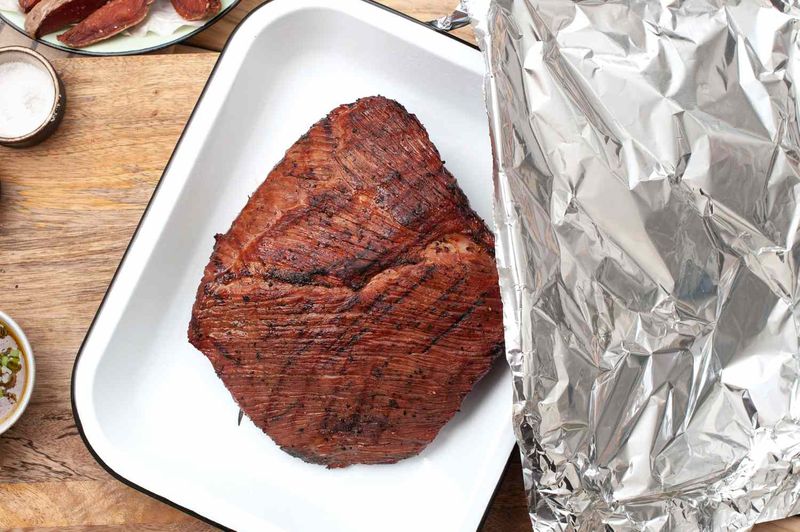
Resting is a critical step often overlooked. Once off the grill, let your steak rest for about 5-10 minutes. This resting period allows the juices to redistribute throughout the meat, ensuring each bite is succulent. Cutting into the steak too soon causes the juices to escape, resulting in a dryer texture. Cover it loosely with foil to keep it warm. This simple step elevates your steak from good to unforgettable, as the flavors harmonize and settle into a tender, juicy bite.
Use a Meat Thermometer
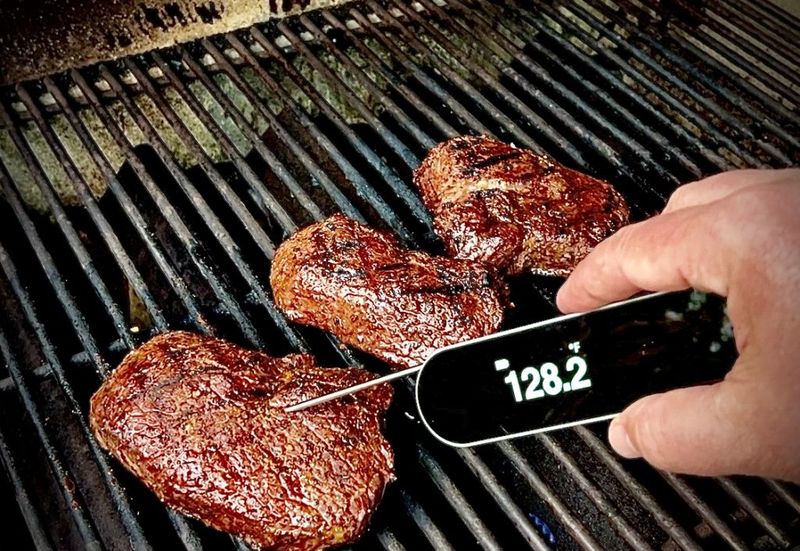
Achieving the ideal doneness consistently requires a reliable meat thermometer. Insert it into the thickest part of the steak, avoiding bones or fat, to get an accurate reading. For medium-rare, aim for 130-135°F. This precision tool eliminates guesswork, ensuring your steak is cooked to your preferred level. Whether you prefer medium or well-done, the thermometer guides you to perfection every time. As grilling conditions vary, this tool becomes indispensable for maintaining quality and satisfying even the pickiest eaters.
Reverse Searing for Even Cooking
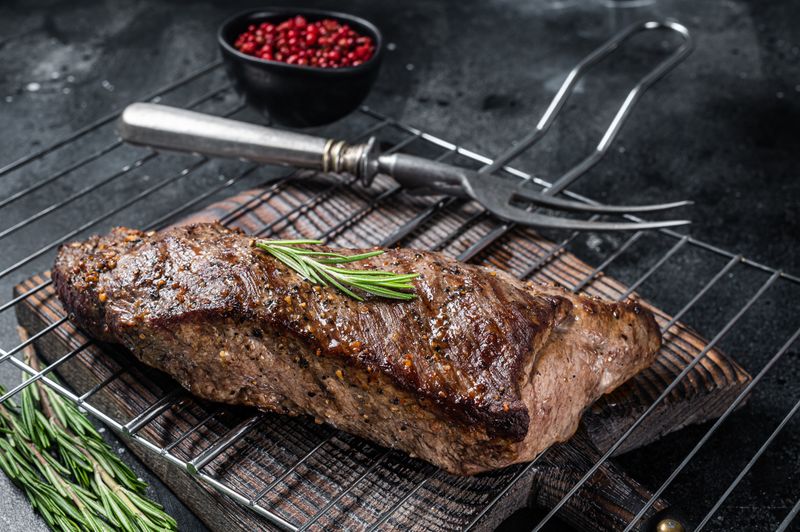
Reverse searing is an innovative method ensuring even cooking. Start by slowly cooking the steak in an oven. This method allows the steak to cook evenly without overcooking the outside. Once it reaches the desired internal temperature, transfer to a hot grill.
Sear both sides to create a flavorful crust. The transition from oven to grill enhances flavor while maintaining juiciness. This technique is perfect for thick cuts, offering a balanced texture.
Did you know? Reverse searing was popularized by chefs to achieve steakhouse-quality results at home.
Use of Marinades for Flavor Depth
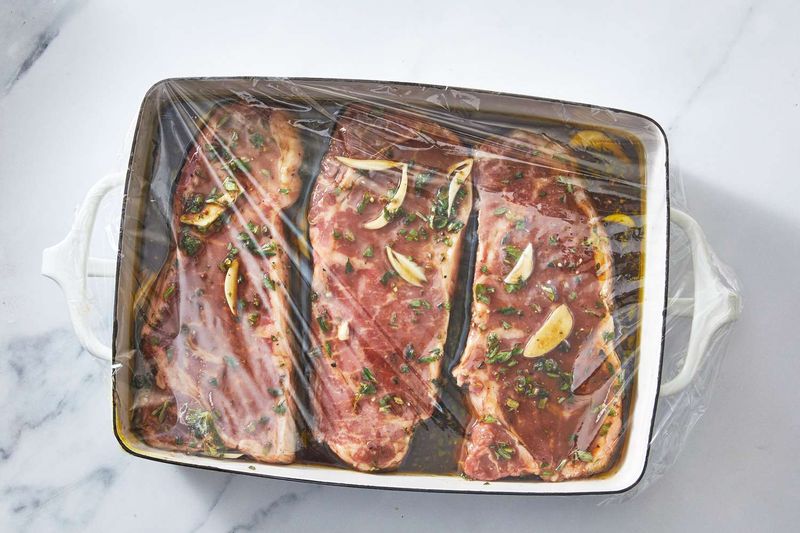
Marinades infuse steaks with rich flavors that transform ordinary cuts. Combining herbs, spices, and acids, marinades penetrate deeply. Consider ingredients like garlic, rosemary, soy sauce, and lemon juice.
Let your steak marinate for at least an hour to maximize flavor. The acidic components tenderize the meat, while the herbs add aromatic depth. This method is especially beneficial for thick steaks, ensuring every bite is packed with taste.
For a fun twist, try global marinades inspired by cuisines from around the world. A well-marinated steak is a true culinary delight.
Basting with Butter for Moisture
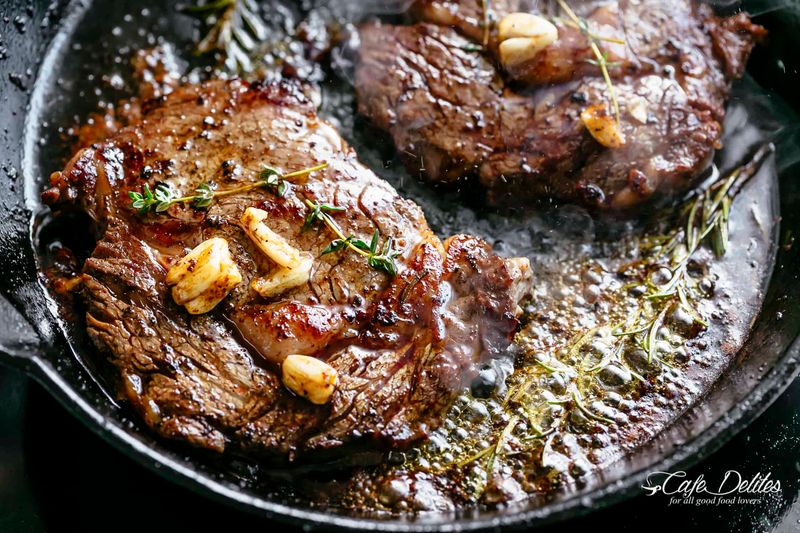
Basting is a technique that adds moisture and richness to steaks. As the steak grills, periodically brush it with melted butter. This not only enhances flavor but also keeps the steak juicy.
Butter, combined with herbs like thyme or rosemary, creates a delectable crust. The continuous basting ensures the steak remains tender and moist throughout. This method is particularly effective for thick cuts which can dry out.
Did you know? Basting has been a staple in French cooking for centuries, known for adding luxurious flavor to meat dishes.
Leave a comment